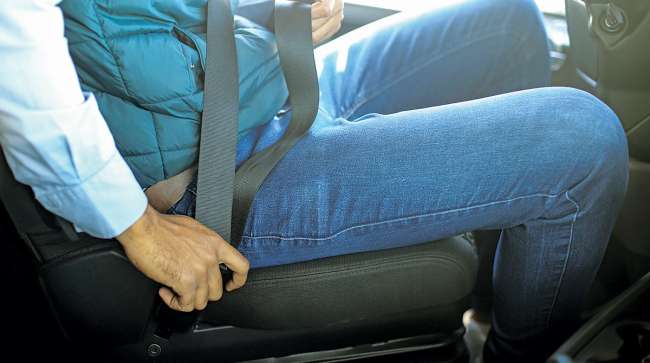Senior Reporter
Distraction, Fatigue Continue to Challenge Drivers, Study Says

[Stay on top of transportation news: Get TTNews in your inbox.]
A new study has concluded that talking and singing in the cab are not distracting for truck drivers, but other common activities such as adjusting the seat belt, reaching for food or drink, and adjusting the instrument panel or mirrors showed significant risk of a crash or near-crash.
The “naturalistic” study on driver distraction and fatigue, published last month, showed an overall decrease in cellphone use compared with previous research.
“Hands-free cellphone use was found to be protective as it likely helps drivers alleviate boredom, while hand-held cellphone use was found to be risky as it takes the driver’s attention away from driving tasks,” concluded the study conducted by the Virginia Tech Transportation Institute. “Additionally, the eighth driving hour showed the highest rate of safety-critical event occurrence.”
dot_57154_DS1 by Transport Topics
The goal of the study was to investigate the impact of distraction and drowsiness on heavy commercial vehicle drivers.
More than 3.8 million miles of data were collected from seven fleets and 10 locations. A total of 182 trucks, 172 truck drivers, 43 motorcoaches and 73 motorcoach drivers participated in the study.
The study defines a “significant critical event” as any of four categories: a crash, near-crash, crash-relevant conflict or unintentional lane deviation.

The study noted that past research of crash databases has indicated that driver distraction is a primary contributing factor in approximately 25% to 30% of crashes. However, because of the research method used in the new study, Virginia Tech Transportation Institute researchers said, “It is commonly believed that the actual percentage of distraction-related crashes may be substantially higher.”
“Naturalistic data collection and reduction has become the gold-standard method for investigating driver distraction as it allows researchers to see what a driver is doing just prior to a safety-critical event in real-world settings,” the study said.
Among major findings:
- Low rates of texting by drivers may indicate that information campaigns, local and national legislation changes, and individual carrier policies have had a positive impact on safe behavioral changes.
- The longer a driver’s eyes were off the forward roadway — for more than 2 seconds — the greater the risk of being involved in a crash or near-crash.
- The first 10 driving hours can be grouped into three parts: low significant critical event rate the first hour, moderate significant critical event rate the second hour and high significant critical event rate the third through 10th hours.
- The timing and duration of a driver’s breaks could impact driving behavior, and the time of day of the trip could also affect drivers’ drowsiness.
- A deeper investigation of the drowsiness data revealed that although most truck drivers with long shifts begin their shift in the very early-morning hours, fatigue is highest in systematic baselines for crashes or near-crashes from 1 a.m. to 6 a.m.
- The majority of the significant critical events occurred in daylight, with no adverse conditions, on nonjunction roadways, on divided roadways and in low traffic such as the interstate.
“Researchers, transportation officials, and the Federal Motor Carrier Safety Administration have all identified driver fatigue as a serious concern for vehicle safety and deemed it to be significantly associated with fatal commercial motor vehicle crashes,” the study said. “Drivers have reported that they become fatigued from insufficient time spent recovering during off-duty times, work overload, not working according to their circadian rhythm, disturbed sleep patterns and the time sensitivity associated with the nature of their jobs.”
Want more news? Listen to today's daily briefing below or go here for more info:



